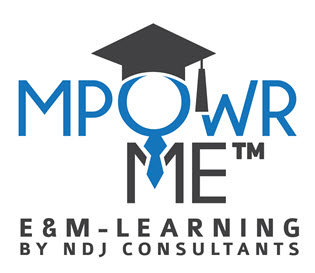
R800.00
Sign In Sign in to register for this training programme
Learning Outcomes
| Avoid words and phrases that are likely to antagonise others |
| Overcome employees´ endless excuses for not reading, understanding or following the rules |
| Watch out for legal traps that even the pros can sometimes overlook |
| Write clearly and concisely |
Description
This programme will get learners up to speed on writing and developing your organisation’s policies and procedures by gaining rules, strategies and guidelines that will ensure they get the results they want - well written policies and procedures that are read and understood by all. NQF Level 5
Outline
| 1. Understand what Makes Policies and Procedures Work | |
| What good policy and procedure writing is really all about | |
| Signs that an informal or "unwritten" rule is no longer working | |
| The importance of documentation | |
| Is a written policy or procedure necessary? | |
| 2. Get Off to a Quick Start | |
| Critical research | |
| Avoiding common problems that contribute to writer´s block | |
| Simplifying a multi-step procedure by using flowcharts | |
| Techniques in writing a perfect policy or procedure on a super-tight deadline | |
| How to sound firm without coming across like a bulldozer | |
| Mind mapping: How this simple pre-writing exercise can save you time and frustration | |
| 3. Writing with Clarity and Ease | |
| Understand what "clarity" really is and why you must change old habits to achieve it | |
| Writing policies and procedures that leave no room for misinterpretation | |
| Avoiding the dreaded "huh?" response: How to ensure users "get" what you mean | |
| Don´t do this, don´t do that—are your employees suffering from "rule overload"? | |
| Words and phrases to avoid | |
| 4. Cutting Legal Liability to a Minimum | |
| The how´s and why´s of writing disclaimers | |
| Writing job descriptions | |
| Problems to look out for when creating an employment application form | |
| Staying out of legal hot water | |
| Eliminating discriminatory language | |
| When you must require employees to "sign on the dotted line" | |
| 5. Improve Readability | |
| Design mistakes that turn users off | |
| How to differentiate between visual clarity and visual clutter | |
| How to achieve consistency | |
| Assisting users in locating information in manuals and handbooks | |
| Choosing the right format | |
| 6. The Implementation Process | |
| How an approval loop can protect you later should problems arise | |
| Notifying users in person (by writing / email) | |
| Overcoming misunderstandings that can occur in group meetings | |
| How to use management to your advantage | |
| 7. Handling Resistance | |
| Why employees resist change and what to do when they resist | |
| How to handle unique stressors of implementing emotionally charged guidelines | |
| How to stand your ground when employees claim a rule is silly, unfair or unnecessary | |
| How to get people to quit making excuses and read what you write | |
| 8. Maintaining Order | |
| The revision cycle | |
| Is it time to change a policy or procedure? Listening to the clues around you | |
| Bringing policies and procedures on-line | |
MPowrMe ™


